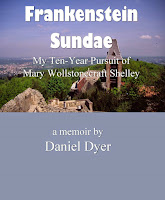There’s no
need to go through an exhaustive summary of the novel—besides, you might want to
read it yourself—but before the Darkness arrives, some years pass; the
relationships grow ever more complicated (we see in those relationships the pale ghosts of Mary’s own
problems—and losses); there is war; death. And then some dark news arrives.
Let’s let Mary tell it;
We, in our cloudy isle, were far removed
from danger, and the only circumstance that brought these disasters all home to
us, was the daily arrival of vessels.[1]
And those
vessels brought news—a plague.
The narrator
says: Can it be true each asked the other
with wonder and dismay, that whole countries are laid waste, whole nations
annihilated, by these disorders in nature?[2]
And then
Lionel becomes the storyteller—writing what he calls his journal of death.[3] London struggles
to carry on—even the theaters remain open.
The months
pass; the crisis deepens; the deaths accelerate at alarming rates; lawlessness
becomes an increasing problem. Hopeful Lionel sees a glimmer of light: We were all equal now.[4] But the England he
knew is gone.
In the fall
of 2096 survivors gather in London and decide to emigrate. And so their wanderings
commence. And then there are only fifty remaining. The number dwindles to four.
And then Lionel in Italy. Alone. He considers suicide. He decides to write
instead and takes a year composing the book that we are reading. As far as he
knows, he is … the last man. He resolves to take to sea in a small boat.
Happy story!
Mary, by the
way, does not imagine much of a technological future. There is travel by
balloon. Steamships are common. But her interests did not really include
technology; her focus was on people, on fear, on loss, on hope and then hopelessness.
And knowing what we know about her own fears and losses creates more slices of
the scalpel across our hearts.



No comments:
Post a Comment